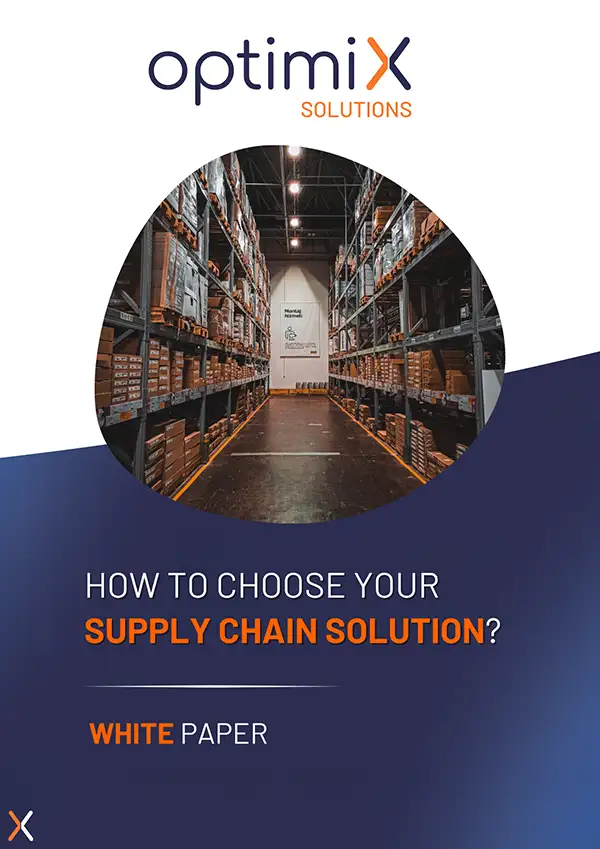In the DIY sector, anticipating demand trends is a priority for supply chain and procurement managers. Seasonality and new trends have a considerable influence on product consumption, making inventory management and promotions a complex task.
Poor forecasting can lead to costly stock-outs or unnecessary surpluses, affecting both customer satisfaction and profit margins.
This is why retailers need to rely on advanced forecasting solutions, integrating Machine Learning and Artificial Intelligence (AI) algorithmic engines. These technologies offer precise data analysis and enable us toanticipate fluctuations in demand with great reliability.
This article explores best practices for understanding and anticipating seasonal trends, and highlights the importance of adopting advanced technological solutions to optimize supply chain processes.
Understanding seasonal trends
Seasonal events
Seasonal events such as Christmas, summer vacations and back-to-school periods have a significant impact on demand for DIY products.
For example, demand for Christmas decorations and outdoor lighting rises sharply at the end of the year, while gardening and barbecue products are more popular in the summer months.
Anticipating these peaks in demand enables retailers to better manage their inventories and maximize sales during these key periods.
Climatic variations
Weather conditions have a strong influence on demand for certain DIY products. Rainy seasons can lead to increased demand for sealants, sump pumps and drainage equipment.
On the other hand, dry spells can boost sales of irrigation and sprinkler systems. By monitoring weather forecasts and analyzing historical data, retailers can adjust their inventories to meet changing consumer needs.
Anticipating new trends
Innovations and new products
New trends in DIY, such as the adoption of eco-friendly technologies or the growing interest in DIY (Do It Yourself) projects, can influence demand. Retailers need to keep abreast of product innovations and new consumer preferences, and adjust their offer accordingly.
For example, the growing popularity of cordless power tools and eco-friendly materials means that inventories need to be adapted quickly to meet this emerging demand.
Marketing campaigns and promotions
Marketing campaigns and promotions can create unexpected peaks in demand. Retailers therefore need to be able to predict the impact of these initiatives on their inventories. By analyzing data from past campaigns and using predictive models, supply chain teams can better plan supplies and avoid stock-outs or over-stocking.
The Importance of Historical Data
Analysis of past sales
Analyzing past sales is key to understanding demand patterns and identifying seasonal trends in the DIY sector. By examining historical performance, retailers can anticipate future needs and adjust their forecasts accordingly.
For example, past sales data may reveal peaks in demand for certain products at specific times of the year, such as gardening tools in spring or heating equipment in autumn. This analysis alsoidentifies the best-performing products, providing opportunities to target marketing and promotional efforts on these items.
By understanding which products tend to sell well and when, retailers can better plan their inventories and avoid out-of-stocks or overstocks. This leads to more efficient inventory management, increased customer satisfaction and reduced costs associated with unsold goods.
Predictive modeling
Predictive modeling is a powerful technique that uses advanced algorithms to analyze historical data and predict future trends. By incorporating variables such as seasons, weather events and marketing campaigns, these models offer more accurate and reliable forecasts.
For example, a predictive model can use data from previous years to forecast demand for building materials after a storm season, enabling retailers to prepare adequately. This approach not only optimizes inventories and supplies, but also enables us to respond more effectively to fluctuations in demand.
Using predictive modeling, retailers can anticipate periods of high demand and plan promotions or restocking accordingly. This helps reduce storage costs, improve product availability and increase customer satisfaction.
In short, predictive modeling transforms historical data into actionable insights, enabling retailers to make informed, proactive decisions to improve their overall performance.
The Importance of Equipping Yourself with an Advanced Supply Chain Solution
Forecast accuracy
Supply chain tools incorporating advanced Machine Learning and AI algorithmic engines offer unrivalled accuracy in demand forecasting. These technologies analyze vast volumes of data in real time, identifying patterns and trends that traditional methods cannot detect.
By taking into account a multitude of variables, such as seasonal trends, customer buying behavior, and external events, these tools provide highly accurate forecasts. This precision enables us to better anticipate customer needs and minimize the risk of out-of-stock situations or overstocking.
This enables retailers to plan their supplies more efficiently, optimizing both product availability and costs. Ultimately, more accurate forecasting translates into improved customer satisfaction and higher profit margins.
Automation and responsiveness
AI-based supply chain systems automate many aspects of inventory management, replenishment and promotions. By reacting quickly to changes in demand, these tools enable retailers to remain agile and responsive.
For example, in the event of unforeseen variations in demand, the system can automatically adjust replenishment orders to avoid stock-outs or surpluses.
This ability to adapt in real time significantly reduces operational inefficiencies and associated costs. Automation also reduces teams’ workloads, enabling them to concentrate on higher value-added tasks. By integrating Machine Learning algorithms, retailers can also anticipate future needs and make proactive, rather than reactive, decisions, improving overall supply chain efficiency.
“
Plan your supplies proactively, reducing the risk of out-of-stocks and overstocks.
Thanks to OptimiX Forecasting& Replenishment, you’ll benefit from better forecasting to anticipate market ups and downs.
“
Cost optimization
The use of advanced algorithms to optimize inventories reduces the costs associated with surpluses and shortages. Machine Learning and AI tools constantly analyze data to adjust stock levels optimally, avoiding the costs associated with overstocking or out-of-stock situations.
In this way, retailers can improve their profitability while ensuring quality service for their customers. What’s more, these tools enable us to identify negotiation opportunities with suppliers by anticipating long-term needs, which can also contribute to significant savings.
By optimizing inventories, retailers also reduce logistics costs, such as storage and transport costs, while improving product availability. This integrated approach maximizes profit margins and ensures high customer satisfaction, while maintaining profitable and efficient operations.
The Importance of Taking Change Management into Account Upstream
Implementing a supply chain solution incorporating advanced Machine Learning and AI algorithmic engines is a major transformation for any organization.
However, the success of this transformation depends not only on the technology itself, but also on how it is adopted and integrated within the company. This is where change management becomes crucial.
Taking change management into account right from the start of the project ensures smooth, efficient adoption of the new solution, minimizing resistance and maximizing benefits.
Preparation and communication
The first step in managing change is preparation and communication. Teams need to be made aware of why the new solution is needed, what benefits it will bring, and how it will affect their roles and responsibilities.
Clear, transparent communication from the outset helps to reduce resistance and get buy-in from stakeholders.
Employees need to understand how the new solution will improve existing processes, and the benefits they will derive, both individually and organizationally.
Training and skills development
Adopting a new technology often means updating skills. It is essential to plan comprehensive training programs to ensure that teams are comfortable with new tools and processes.
Training must be ongoing, going beyond the initial deployment phase to include refresher sessions and continuing professional development opportunities.
Change champions can be identified within the organization to act as resources and support for their colleagues, facilitating adoption of the new solution.
Adapting processes and managing resistance
Implementing a new supply chain solution may require adjustments to existing processes. Companies must be prepared to review and adapt their processes to take full advantage of the new solution’s capabilities.
This can include reviewing workflows, redefining roles and responsibilities, and optimizing inventory management procedures. It’s also important to manage resistance to change. This can be done by involving employees in the change process, gathering their feedback and proactively addressing their concerns.
Monitoring and assessment
Finally, ongoing monitoring and evaluation of the implementation and adoption of the new solution are essential to ensure long-term success. Companies need to establish key performance indicators (KPIs) to measure the effectiveness of the new solution and the impact of change management.
Adjustments need to be made on the basis of feedback and observed performance. Regular monitoring enables potential problems to be identified early and corrective action taken before they become critical.
——————————
Anticipating seasonal and new trends is essential for DIY retailers.
By understanding demand fluctuations, analyzing historical data and equipping themselves with advanced supply chain tools, supply chain and procurement managers can optimize inventories, reduce costs and maximize profits.
To go further, it is essential to explore how these technologies can transform other aspects of retail management, such as personalizing customer offers and improving logistics efficiency.
The future of DIY retailing lies in intelligent, technological inventory management, where innovation and adaptability are the watchwords.









